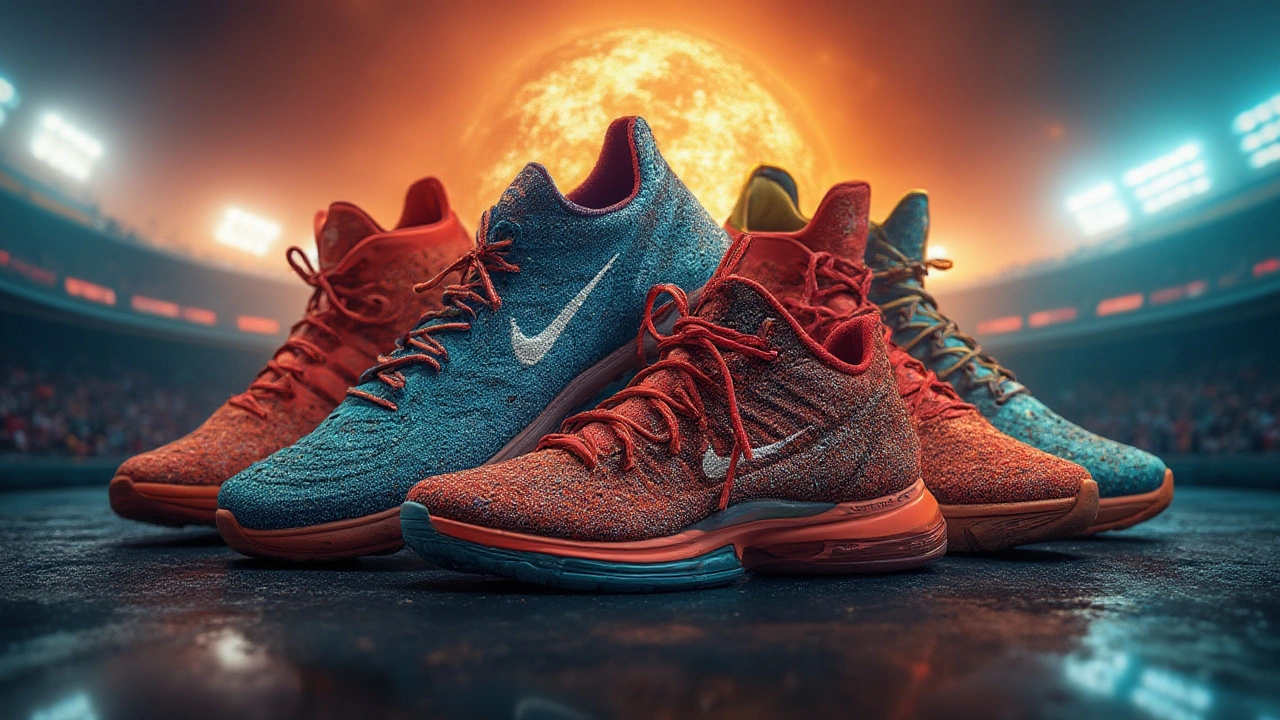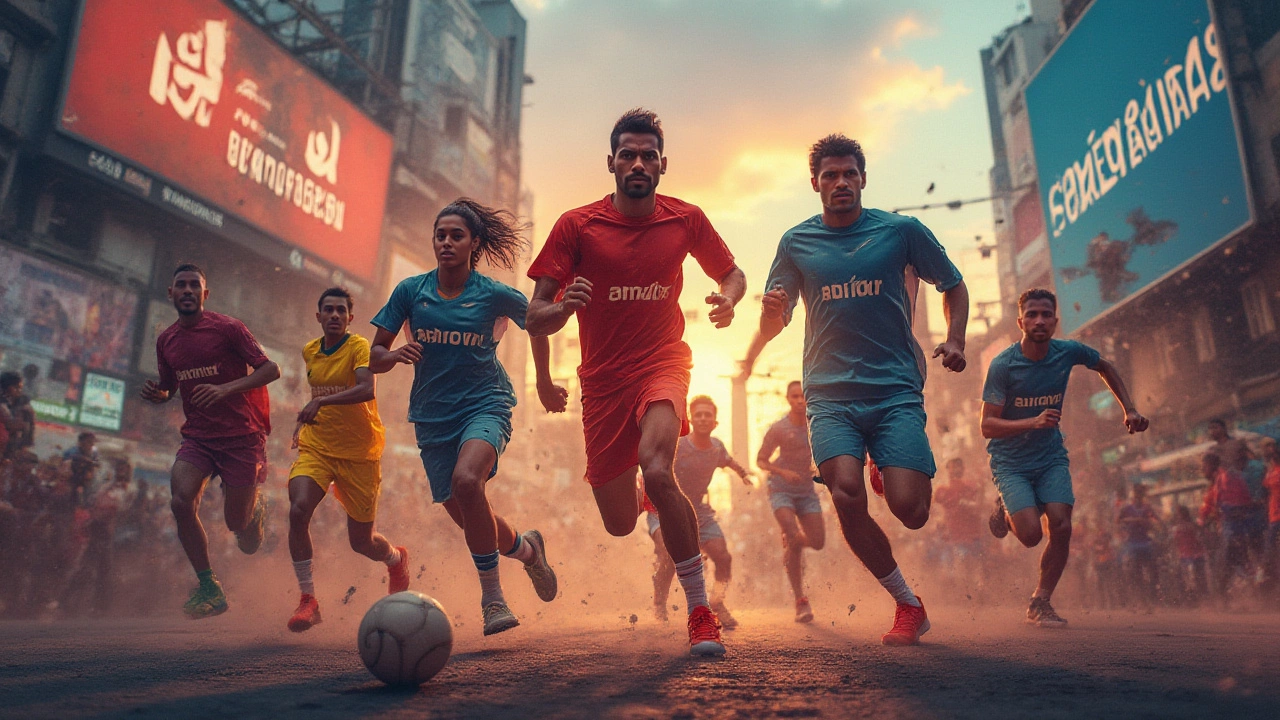Is your favourite jersey made by a company that dominates the planet? Or is the name on your runners just a tiny player in a wild global industry? When it comes to sports equipment, there is one company that towers above the rest—and its logo is as famous in Tokyo as it is in Brisbane. Let’s untangle the story, the stats, and what this means for everyday athletes and weekend warriors all over Australia and beyond.
The Global Giants: Who’s Really Number One?
The biggest sports equipment company in the world, by just about any measure, is Nike. The swoosh isn’t just a fashion statement; it's a business empire. In 2024, Nike pulled in almost 50 billion USD in revenue, smashing records even as the world economy saw its share of rollercoasters. For context, the nearest rival, Adidas, clocked a solid but distant $24 billion. That’s twice the size, and it’s not close. Go further down: Puma, Under Armour, and ASICS bring in only a fraction of these numbers each year.
Want a snapshot? Here’s how the giants stack up by global revenue (from their most recent annual reports):
| Brand | Global Revenue 2024 (USD) | Founded | Home Country |
|---|---|---|---|
| Nike | 49.8 billion | 1964 | USA |
| Adidas | 24.5 billion | 1949 | Germany |
| Puma | 7.5 billion | 1948 | Germany |
| Under Armour | 5.7 billion | 1996 | USA |
| ASICS | 4.2 billion | 1949 | Japan |
Nike swapped its original name (Blue Ribbon Sports) for the famous Swoosh in 1971, signing NBA rookie Michael Jordan a decade later and never looking back. The Air Jordan line alone is a billion-dollar brand. And when it comes to marketing, Nike’s got the edge—big campaigns, epic athlete endorsements, and a brand philosophy that hits emotional notes. Adidas is massive in its own right, popular for its European football sponsorships and its sneaker collaborations. But the numbers don’t lie: Nike is the true juggernaut when it comes to size, worldwide influence, and sales.
Here’s a breakdown of Nike’s 2024 performance by region, just to show you how global this beast really is:
| Region | Revenue (USD) |
|---|---|
| North America | 19.2 billion |
| Europe, Middle East & Africa | 15.7 billion |
| Greater China | 6.6 billion |
| Asia Pacific & Latin America | 8.3 billion |
No matter where you look—football pitches in Europe, running tracks in Japan, backyards in suburban Australia—Nike’s stamp is everywhere. It’s not just sports apparel; they make football boots, tennis rackets, wearable tech, and even own Converse and Jordan Brand. That diversity makes Nike hard to match.
Adidas is the kingpin for soccer gear. Think about the FIFA World Cup football or Messi’s legendary golden boots. But even the world’s best don’t bring Adidas close to Nike’s sales numbers. Puma lands third—popular, especially in the lifestyle sneaker culture, but still a minor player compared to the Swoosh and the three stripes.

How Do These Companies Stay at the Top?
It’s not just about logos or celebrity endorsements. These companies invest billions in research, design, and tech. Nike has a whole innovation lab in Oregon, rolling out things like Flyknit (using yarn to weave sneakers instead of glue and mesh) or React foam that gets you bouncing down Brisbane’s South Bank all day. Adidas counters with Primegreen (made from recycled plastic—it’s a big deal for the eco-minded) and its famous Boost cushioning. Puma goes hard with fashion partnerships—remember Rihanna's Creepers?—while Under Armour built its name off sweat-wicking fabric technology.
Marketing plays a huge role. Nike signs the biggest names from every sport—think LeBron James, Serena Williams, Kylian Mbappé. That's on top of their sponsorship deals with teams, leagues, and national Olympic committees. It’s not just flair: the return on investment is massive. When Michael Jordan wore Air Jordans, Nike’s revenue soared by half a billion dollars in just one year.
Production scale and global reach matter too. Nike has manufacturing partners in over 40 countries, which is handy when you want your shoes on shelves from Sydney to Sao Paulo. These companies also ride culture waves—when sneakerheads queue for a new drop, it’s as much about belonging as it is about sport. No wonder Nike’s brand is valued at over $30 billion alone, making it one of the most valuable brands in any industry. Adidas and Puma trail in brand value but still outrank almost every other sports equipment company.
But here’s something you might not realise: part of what keeps Nike and Adidas on top is relentless reinvention. They buy up smaller sports brands. They pump resources into e-commerce so you can order those new trainers from your phone. They try new materials every few years, pushing into sustainability (like shoes made from ocean plastic or plant-based materials). If you’re looking for tips, shop their “sustainability” or “recycled” lines to find kit that fits your eco priorities. Both companies also run loyalty programs—join up, and you’ll get access to early drops, discounts, or unique gear.
Another trick: exclusive editions and limited releases. Adidas and Nike love to partner with artists, designers, and even video games. It makes their products feel rare, and that demand spikes resale prices—sneaker culture, after all, is now a global phenomenon, with sites like StockX flipping limited Nikes for thousands of dollars. Stick to general releases if you want bargains; hunt for collaborations if you want something nobody else in your running group will have.

Beyond the Big Names: The Wider World of Sports Gear
So does bigger mean better? Not always. Nike, Adidas, and Puma rule global revenue, but heaps of specialised equipment brands offer gear built for specific sports. Head, Wilson, Babolat, and Yonex are huge for tennis and badminton. In rugby, Canterbury and Gilbert are at the top, but none of these reach even $1 billion a year—still plenty, but it shows how mainstream popularity shapes the market.
Sports equipment isn’t just about shoes or jerseys. Hockey needs sticks and protective gear, American football needs helmets. Most big names outsource this stuff to specialists. Even Nike doesn’t make cricket bats or rugby boots (though they do produce a mean football boot range). If you play niche or emerging sports, you’ll probably find your favourite gear from smaller, focused players—and that’s usually great for quality, if less so for global scale.
Here’s a tip for shopping smart: For mainline gear (shoes, shirts, balls, general fitness apparel) Nike or Adidas will have great options, often with broader sizing and better warranty support. But if you’re obsessed with a specific sport, check the specialist brands first. For example, buy a Babolat tennis racquet over a Nike one—because Nike doesn’t make racquets. For swimming, Speedo and Arena lap the field (pun intended). Cyclists swear by Shimano and Trek. If you’re an Aussie runner, ASICS and New Balance have loyal fanbases here, often better tailored for our summer heat and local running culture.
By the way, don’t ignore local brands. In Australia, companies like Steeden (rugby league balls) or Skins (compression wear) are well-respected for specific sports needs. While they don’t match Nike or Adidas in revenue, they punch well above their weight for quality and loyal followings.
Check for counterfeits—this is especially important when you see deals “too good to be true” online. Nike and Adidas often face counterfeit issues; buying direct from their sites or well-known sports chains is safest. If price is your priority, look for last season’s models, which often drop 30-50% in price at major outlets once the new designs land.
To sum it up without sounding too dramatic: Nike’s dominance isn’t just about money. It’s about being everywhere, investing in the latest tech, and shaping our idea of what it means to be a sporty, active person—whether we’re running marathons or playing backyard cricket. Adidas has its diehard fans and owns the world’s football fields, while Puma and Under Armour chase new segments and fashion collabs. Don’t get caught up in the brand wars, though—find what feels right for you and your sport. The options have never been bigger, and your old footy boots probably owe their design to three decades of global sports tech wars fought by these absolute giants.
